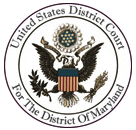Baltimore Convention Center

The Baltimore Convention Center is a convention and exhibition hall located in downtown Baltimore, Maryland. The center is a municipal building owned and operated by the City of Baltimore. The facility was constructed in two separate phases: the original Center, with 425,000 square feet (39,500 m2) of exhibition and meeting space, opened in August 1979 at a cost of $51.4 million. A $151 million expansion, which increased the center's total size to 1,225,000 square feet (113,800 m2) was completed in April 1997. The 752-room, city-owned Hilton Baltimore hotel opened in August 2008, connected to the convention center by an enclosed skywalk bridge. In March 2016, the State of Maryland announced it was going to explore expanding the Baltimore Convention Center for an estimated cost of $600 million and build a new hotel attached to the expansion. As of August 2016, the proposal also included building a new arena. On February 4, 2020, it was reported by the Baltimore Business Journal that the proposed expansion will not occur as a revised cost estimate for just expanding the convention center is more than $1.5 billion so the proposal has been scaled back significantly to only modernize the convention center, not expand it as previously proposed.
Excerpt from the Wikipedia article Baltimore Convention Center (License: CC BY-SA 3.0, Authors, Images).Baltimore Convention Center
West Pratt Street, Baltimore
Geographical coordinates (GPS) Address External links Nearby Places Show on map
Geographical coordinates (GPS)
| Latitude | Longitude |
|---|---|
| N 39.28538 ° | E -76.61734 ° |
Address
Baltimore Convention Center
West Pratt Street 1
21201 Baltimore
Maryland, United States
Open on Google Maps








